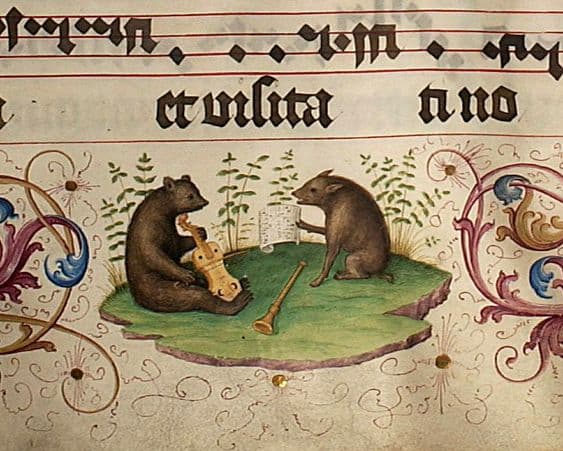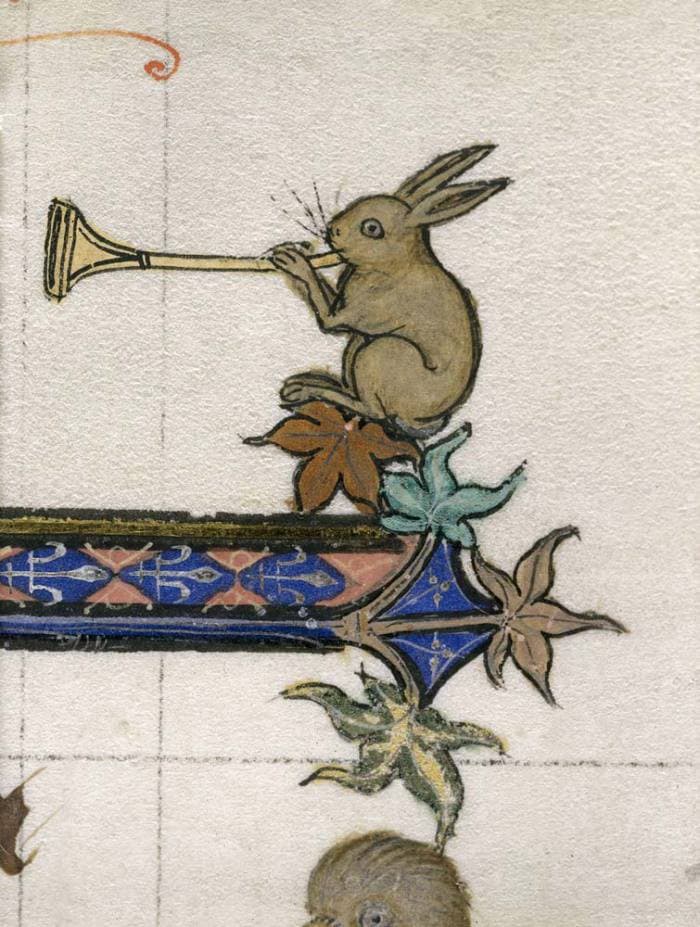Hidden in the decoration of medieval books are many different kinds of illustrations – some of them show people doing everyday things, others show animals doing everyday human things. And then, in some special ones, we see animals playing musical instruments. We’ve found instrument-playing bears, cats, dogs, rabbits, monkeys, cows, boars, donkeys, and all kinds of fantastic animal combinations.
We started with instruments-playing cats and rabbits as musicians. One of the other favourite animals for depiction in the marginalia were monkeys – like humans in some aspects but definitely animals. In one sense, the use of monkey imagery could be a comment on how it’s possible for anyone to learn to play music or a comment on how terrible bad music can be.
Monkeys are shown playing the most noisy of instruments, the bagpipe.

Monkey and bagpipes (Chroniques sire Jehan Froissart (Bibliothèque national), Français 2643 f. 406r)

Monkey and bagpipes – Book of Hours – France, Paris,
1480-1500 – MS M.179 fol. 155r
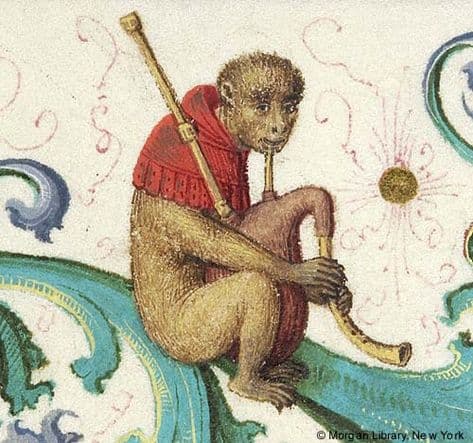
Monkey and bagpipes (Gradual (Morgan Library) MS. M. 905 II. fol. 91r)
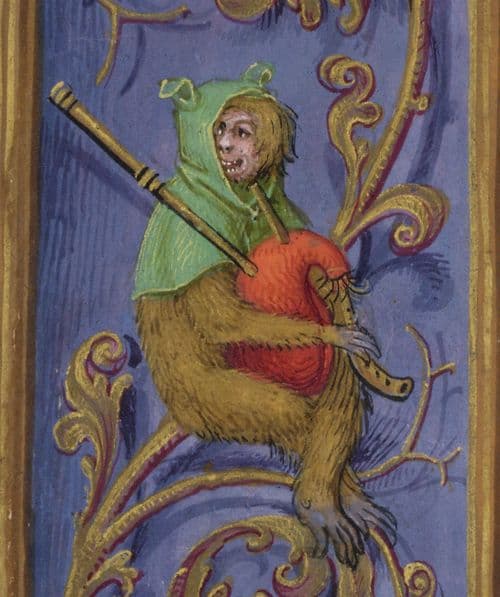
Monkey and bagpipes (Breviary of Queen Isabella of Castile (British Library). Add MS 18851, f. 419v)

Monkey and bagpipes – Breviary (France,
possibly Toulouse), M.463, fol. 609v)
Since the original bagpipe was an entire animal skin with the openings either closed or fitted with pipes, the idea of an animal playing an animal instrument was just too good to ignore.
Anonymous: Bujo (Riccardo Delfino, bagpipes)
Monkeys are also shown playing stringed instruments such as the vielle, the psaltry, the harp, and a rare instrument, the tromba marina, which was usually only played by nuns.

Monkey and Vielle (The Maastricht Hours (British Library), Stowe MS 17, f. 206v)

Monkey and vielle (Prayer Book of Charles the Bold (Los Angeles, J. Paul Getty Museum) Ms. 37, fol. 41v)

Monkey and Psaltry – (Chroniques sire Jehan Froissart
(Bibliothèque national), Français 2643 f.72r
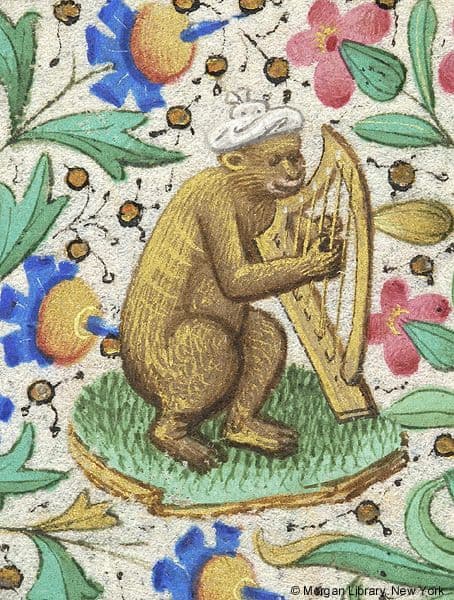
Monkey and Harp (Book of Hours (Morgan Library), MS M.282 fol. 133v )
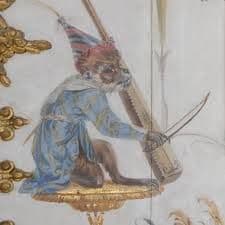
Monkey and Tromba marina (Grand Singerie (Chantilly))
The Trumpet Marine Project – Three Dances by Jean-Baptiste Prin
The tromba marina is a single-string instrument with a triangular-shaped body that is open at one end. It has a curiously metallic sound for a stringed instrument because of the unique way that the bridge is attached to the instrument body. In the early 17th century, the instrument was usually 7 feet 3 inches (2.21 m) long. It was often played by nuns, who were forbidden to play trumpets, to create a trumpet-like sound. The monkey is playing the instrument upside down – the bow should cross the strings at the top of the instrument, not at the bottom as shown.
Monkeys playing wind instruments seem to be less common, we do have them playing the shawm, a rather anonymous woodwind-shaped instrument, a horn, and the pipe and tabor.
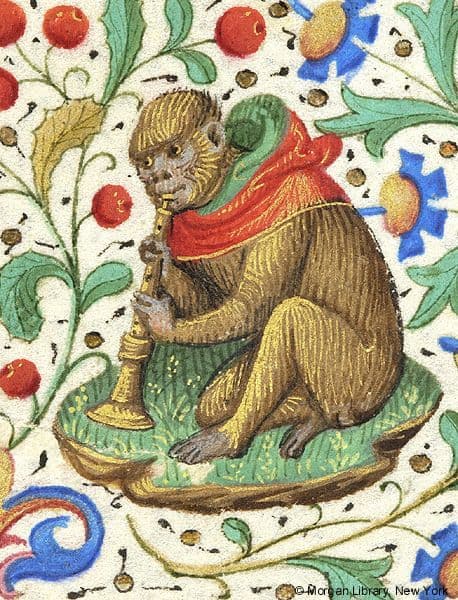
Monkey and shawm (Book of Hours (Morgan Library), MS M.282 fol. 58r)
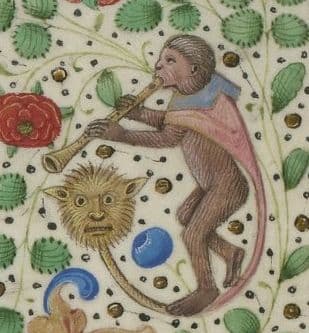
Monkey and woodwind (Chroniques sire Jehan Froissart
(Bibliothèque national))
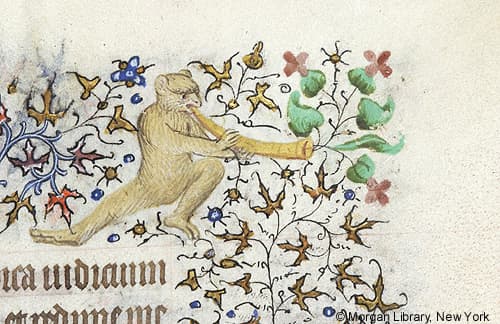
Monkey and horn (Book of Hours (Morgan Library), MS M.1004 fol. 74r)

Monkey with pipe and tabor
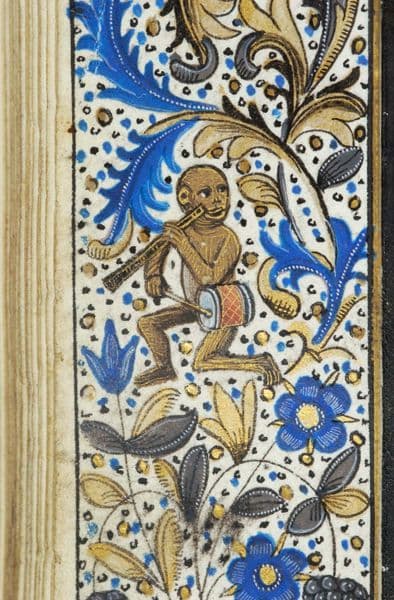
Monkey with pipe and tabor (Book of Hours (Morgan Library), MS H.7 fol. 80v)
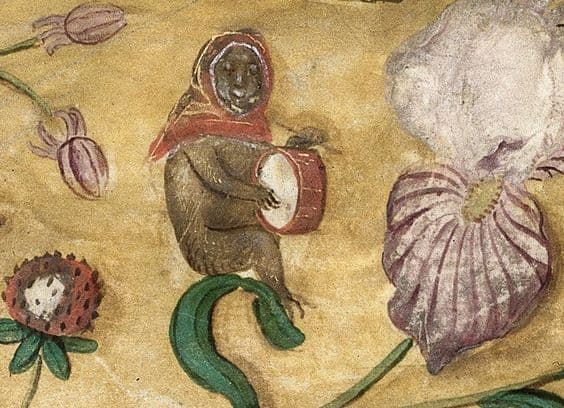
Monkey with pipe and tabor- Royal 1 E V, f. 3, early 16th c. British Library
Gherardello da Firenze: De poni amor a me (arr. P. Hoxbro) (Poul Hoxbro, pipe and tabor)
The pipe and tabor were two instruments played at once by a single performer. The pipe, a simple pipe with three holes, was played in one hand while the other played the tabor, a drum that hung around the player’s body or attached to one wrist.
Monkeys played the portative organ, although with no indication of who was pumping the organ (see the rabbit musicians article), a frame drum, and the triangle.

Monkey and Portative Organ – Book of Hours (Bodleian Library), MS Douce 266)
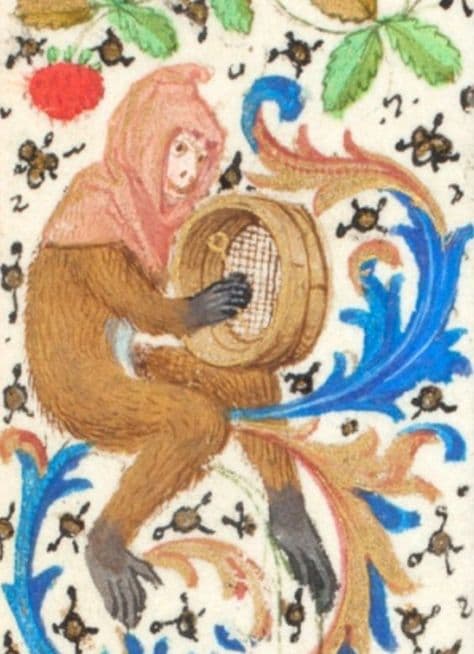
Monkey with frame drum- (Trivulzio Book of Hours (Koninklijke Bibliotheek))
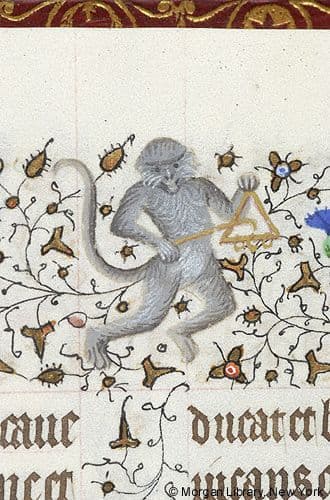
Monkey playing the triangle (Book of Hours (Morgan Library),
MS M. 1004, fol. 160r)
Hildegard of Bingen: O Euchari (arr. P. Hoxbro)
What’s interesting is that, with the exception of the tromba marina, which is being played upside down, most instruments are shown in their proper playing style. The monkeys aren’t hanging from trees, although they may be sitting on branches or even small pieces of grass. Only one monkey, the one playing the triangle, has a tail, which is a characteristic solely of New World monkeys, so all the rest have to be Old World monkeys. Most of the monkeys are shown with clothes, sometimes only a hook, but other times with jackets and cloaks.
For more of the best in classical music, sign up to our E-Newsletter

